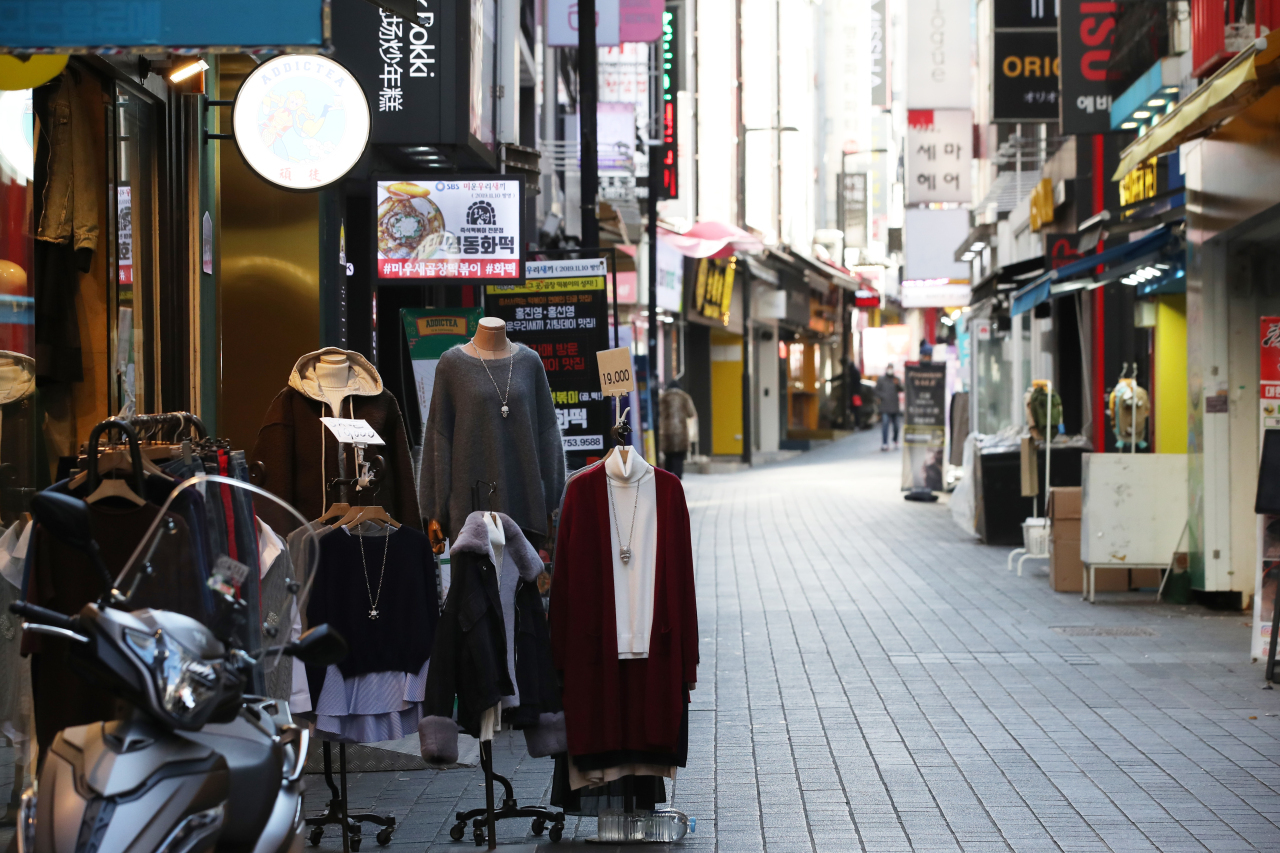Robust exports partly buffer economic slowdown amid weak domestic demand: KDI
By YonhapPublished : Feb. 7, 2021 - 13:35

South Korea's domestic demand is faltering amid a flare-up in new coronavirus cases, but the country's improving exports have partially buffered an economic slowdown, a state-run think tank said Sunday.
As consumption and employment took a beating amid the third wave of the COVID-19 pandemic, economic activity has remained sluggish, led by domestic demand, according to a monthly economic assessment report by the Korea Development Institute (KDI).
"The Korean economy saw its domestic demand contract further as the third COVID-19 wave rolls across the country. However, improvements in goods exports served to partially buffer the slowdown in economic activity," the English-language report showed.
Production in the service sector declined 1.1 percent in December from the previous month as tougher virus curbs hit the segments handling face-to-face services, such as accommodations and restaurants, according to the statistics agency.
But despite the sluggish service industry, the country's overall industrial output rose 0.5 percent on-month in December on the back of a boom in the chipmaking industry.
South Korea's exports advanced 11.4 percent on-year in January, helped by brisk demand for chips and cars amid the COVID-19 pandemic, according to the trade ministry.
"The contraction in consumption is expected to continue as tighter social distancing measures were sustained throughout January," the KDI said.
On Dec. 8, South Korea tightened its social distancing rules to Level 2.5, the second highest, in the Seoul metropolitan area, home to half of its 51.6 million population, and to Level 2 in the rest of the country.
After the daily number of virus infections hit a record high of 1,241 on Dec. 25, new virus cases have stayed near 400. (Yonhap)
As consumption and employment took a beating amid the third wave of the COVID-19 pandemic, economic activity has remained sluggish, led by domestic demand, according to a monthly economic assessment report by the Korea Development Institute (KDI).
"The Korean economy saw its domestic demand contract further as the third COVID-19 wave rolls across the country. However, improvements in goods exports served to partially buffer the slowdown in economic activity," the English-language report showed.
Production in the service sector declined 1.1 percent in December from the previous month as tougher virus curbs hit the segments handling face-to-face services, such as accommodations and restaurants, according to the statistics agency.
But despite the sluggish service industry, the country's overall industrial output rose 0.5 percent on-month in December on the back of a boom in the chipmaking industry.
South Korea's exports advanced 11.4 percent on-year in January, helped by brisk demand for chips and cars amid the COVID-19 pandemic, according to the trade ministry.
"The contraction in consumption is expected to continue as tighter social distancing measures were sustained throughout January," the KDI said.
On Dec. 8, South Korea tightened its social distancing rules to Level 2.5, the second highest, in the Seoul metropolitan area, home to half of its 51.6 million population, and to Level 2 in the rest of the country.
After the daily number of virus infections hit a record high of 1,241 on Dec. 25, new virus cases have stayed near 400. (Yonhap)



















![[Today’s K-pop] Treasure to publish magazine for debut anniversary](http://res.heraldm.com/phpwas/restmb_idxmake.php?idx=642&simg=/content/image/2024/07/26/20240726050551_0.jpg&u=)